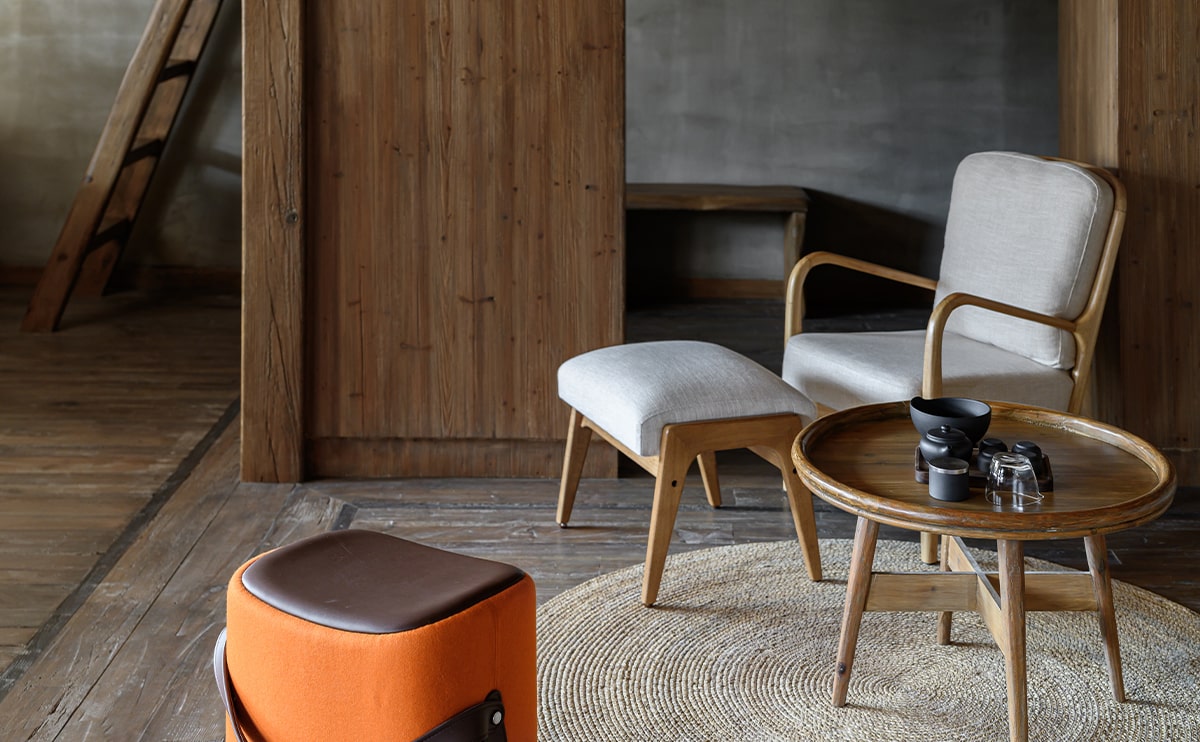
Blog
Eco-Friendly Furniture: Sustainable Materials and Green Design Practices

In an age where sustainability and environmental consciousness are at the forefront of our collective consciousness, the way we furnish our homes and workplaces is undergoing a significant transformation. Eco-friendly furniture, which focuses on using sustainable materials and adopting green design practices, has emerged as a viable and responsible choice for both consumers and designers. This article delves into the world of eco-friendly furniture, exploring the use of sustainable materials and green design practices that are shaping the future of interior design.
Sustainable Materials
- Reclaimed Wood: One of the primary materials in eco-friendly furniture is reclaimed wood. This wood is salvaged from old buildings, barns, or other sources, offering a second life to timbers that might otherwise be discarded. The use of reclaimed wood reduces the demand for new timber and helps conserve forests.
- Bamboo: Bamboo is a rapidly renewable resource that can be harvested without harming the plant. It is a popular choice for eco-friendly furniture due to its strength, durability, and versatility. Bamboo furniture is not only sustainable but also aesthetically pleasing.
- Recycled Metal: Scrap metal, such as discarded automobile parts or industrial waste, can be repurposed into unique and sturdy furniture pieces. Recycling metal reduces the energy required to extract and process new materials.
- FSC-Certified Wood: The Forest Stewardship Council (FSC) certifies wood products that come from responsibly managed forests. Furniture made from FSC-certified wood ensures that it comes from sustainable sources, with a focus on forest conservation and biodiversity.
- Hemp and Organic Fabrics: Eco-friendly furniture often incorporates upholstery made from sustainable materials like hemp and organic cotton. These textiles are grown without the use of harmful pesticides and synthetic fertilizers, reducing the environmental impact of their production.
Green Design Practices
- Modular and Multifunctional Designs: Eco-friendly furniture is designed with versatility in mind. Modular pieces can be easily reconfigured to adapt to changing needs, reducing the need for new furniture and minimizing waste. Multifunctional furniture, such as sofa beds and storage ottomans, maximizes space and functionality.
- Local Sourcing: Reducing transportation distances is a key green design practice. By sourcing materials and manufacturing furniture locally, designers can minimize the carbon footprint associated with shipping and transportation.
- Low-VOC Finishes: Volatile organic compounds (VOCs) in paints and finishes can release harmful chemicals into the air. Eco-friendly furniture uses low-VOC or VOC-free finishes, ensuring healthier indoor air quality and reducing environmental pollution.
- Minimal Waste Production: Green design practices prioritize the reduction of waste during the manufacturing process. CNC (Computer Numerical Control) technology is often used to cut materials with precision, minimizing waste and maximizing the utilization of resources.
- Longevity and Durability: Eco-friendly furniture is built to last. Durable construction and high-quality materials ensure that these pieces can withstand the test of time, reducing the need for frequent replacements and contributing to a circular economy.
- Zero-Waste Design: Some designers are embracing the concept of zero-waste design, where every part of a material is utilized in the creation of a piece, leaving no waste behind. This approach combines ingenuity and sustainability to create truly eco-friendly furniture.
The Benefits of Eco-Friendly Furniture
Eco-friendly furniture offers a host of benefits to consumers, designers, and the environment. Here are some of the key advantages:
- Environmental Responsibility: By using sustainable materials and green design practices, eco-friendly furniture significantly reduces its ecological footprint. This helps preserve natural resources and mitigates the negative impact of traditional furniture manufacturing.
- Healthier Living Spaces: Furniture made from eco-friendly materials and finishes contributes to healthier indoor air quality by minimizing the presence of harmful chemicals. This is particularly important for those with allergies or sensitivities.
- Unique Aesthetics: Many eco-friendly furniture pieces are handcrafted and display a distinctive character, making them stand out in terms of design and aesthetics. The use of reclaimed materials often results in one-of-a-kind creations.
- Long-Term Savings: While eco-friendly furniture may have a slightly higher upfront cost, it offers long-term savings through durability and resistance to wear and tear. In the end, it often proves to be a cost-effective choice.
The Future of Eco-Friendly Furniture
As the demand for sustainable living and responsible consumerism continues to grow, the future of eco-friendly furniture looks promising. Designers are constantly innovating and exploring new sustainable materials and methods. With a focus on ethical and eco-conscious practices, eco-friendly furniture will play a pivotal role in shaping the interiors of tomorrow.
